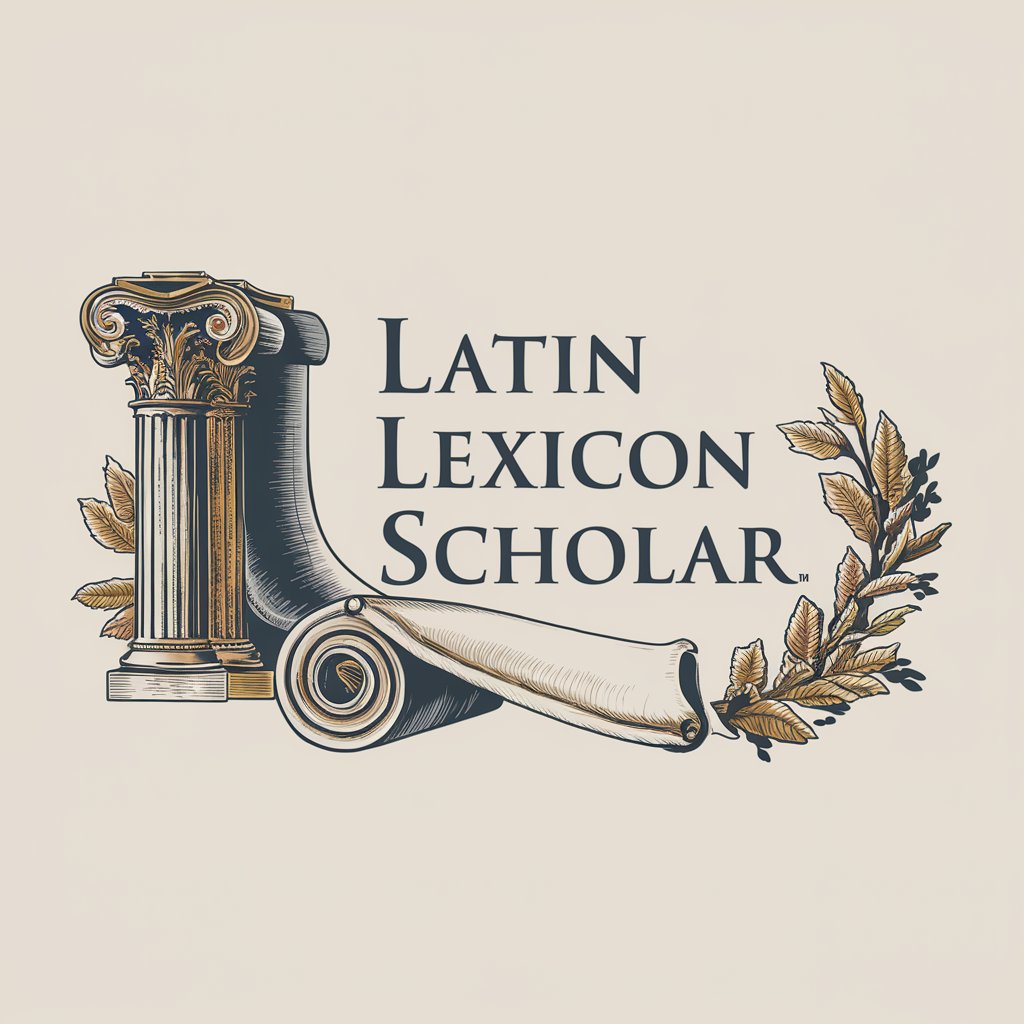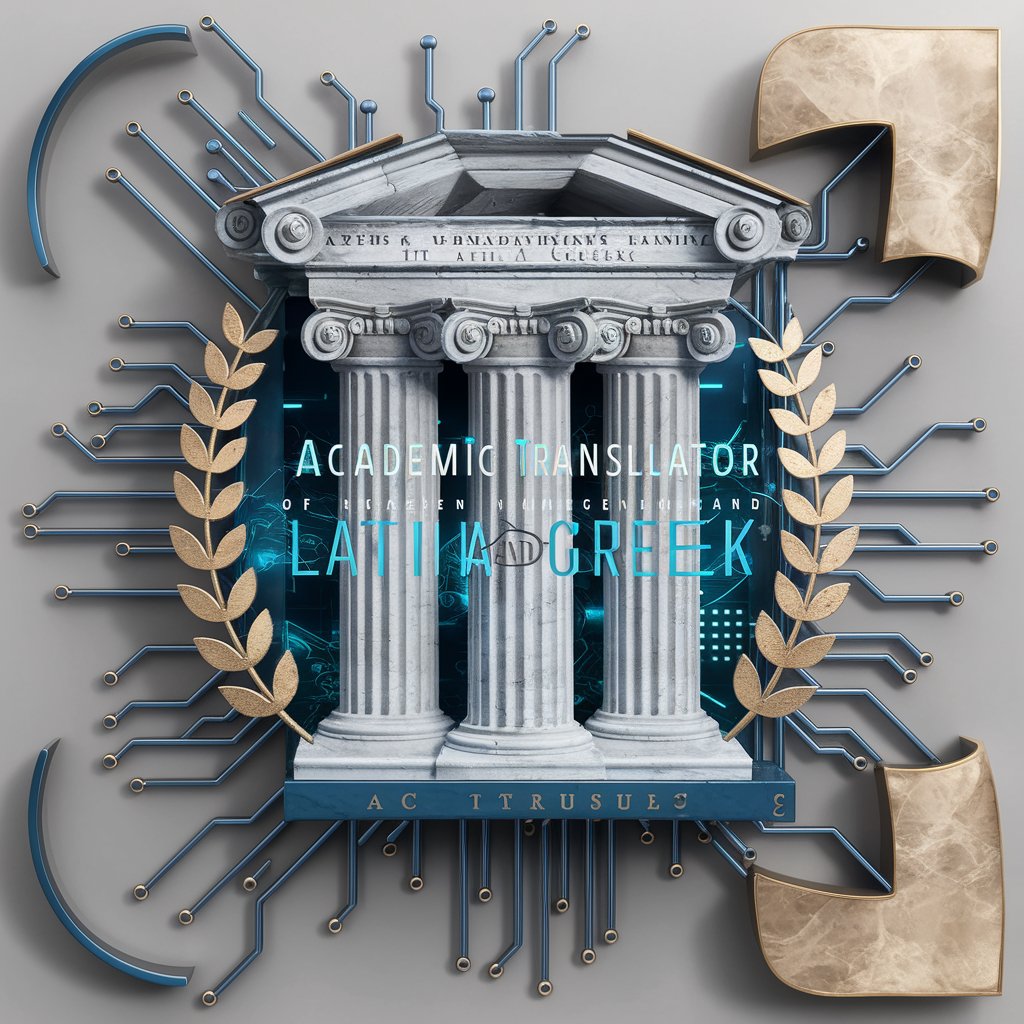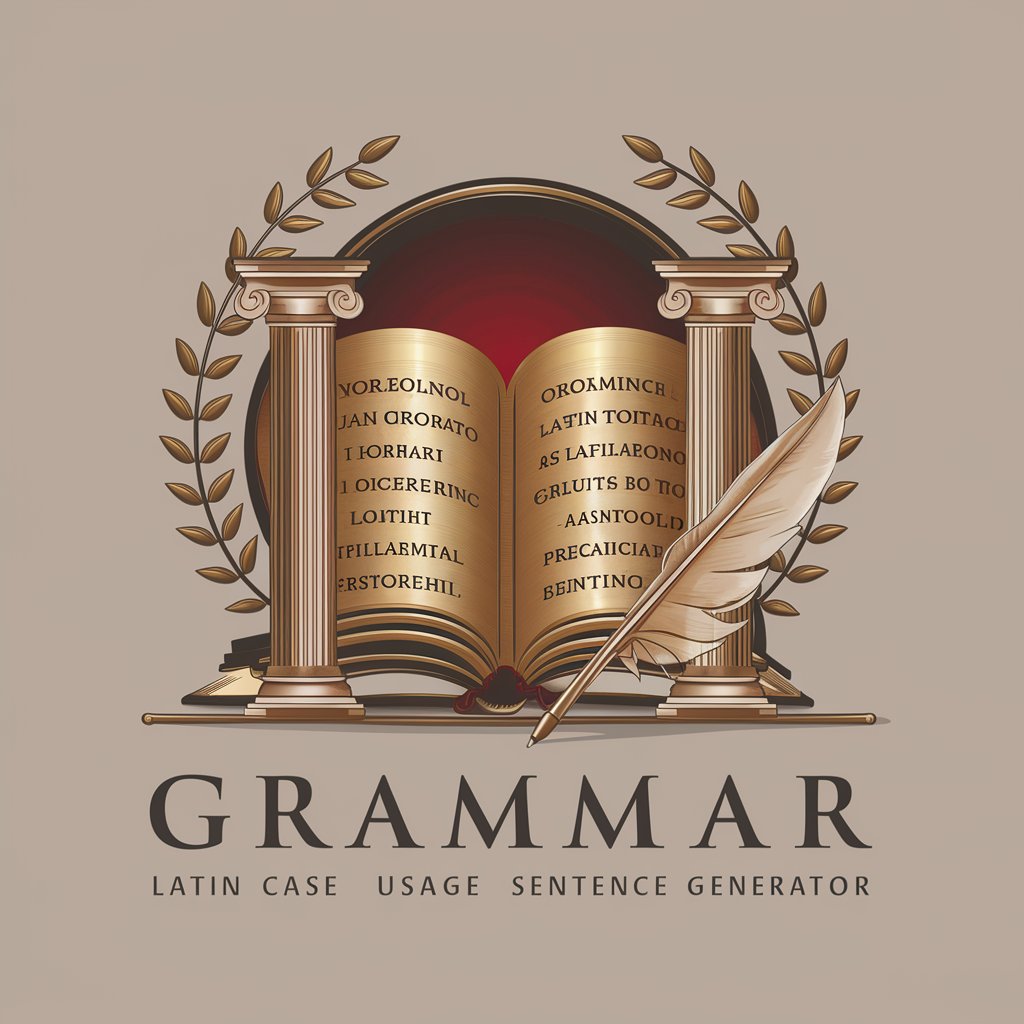
TRANSLATE ENGLISH TO LATIN - English to Latin AI Translation

Welcome to Translate English to Latin.
Empowering Latin translation with AI
Translate the word 'courage' into Latin.
What is the Latin translation of 'knowledge'?
How do you say 'freedom' in Latin?
Translate the phrase 'power and wisdom' into Latin.
Get Embed Code
Overview of TRANSLATE ENGLISH TO LATIN
TRANSLATE ENGLISH TO LATIN is a specialized language translation tool designed to accurately convert English text into Latin. It's built to assist users in understanding and translating phrases, words, and texts from English to Latin, incorporating a deep understanding of linguistic structures, morphological analysis, and the syntactic nuances of both languages. This tool is particularly useful in educational contexts, historical research, and for enthusiasts of classical languages, offering a bridge between contemporary English and the ancient Latin language. For example, a user might input the English sentence 'The quick brown fox jumps over the lazy dog,' and TRANSLATE ENGLISH TO LATIN would provide the Latin equivalent, considering grammatical accuracy and contextual relevance. Powered by ChatGPT-4o。

Core Functions of TRANSLATE ENGLISH TO LATIN
Direct Translation
Example
Translating the phrase 'peaceful resolution' into Latin as 'pacificum solutio.'
Scenario
Used by scholars or students needing accurate Latin translations of specific terms for academic papers or studies in classical literature.
Morphological Analysis
Example
Breaking down the word 'unbelievable' into its root ('believe'), prefix ('un-'), and suffix ('-able') to find the closest Latin equivalents.
Scenario
Helpful for linguistics students or enthusiasts looking to understand the construction and etymology of Latin words derived from English.
Grammar and Syntax Adjustment
Example
Adjusting the sentence structure from English subject-verb-object (SVO) order to Latin's more flexible syntax, focusing on proper case endings.
Scenario
Utilized by authors or translators working on rendering English literary works into Latin, ensuring that translations maintain the original's stylistic and syntactic integrity.
Ideal User Groups for TRANSLATE ENGLISH TO LATIN
Academic Researchers
Scholars and students engaged in classical studies, Latin language courses, or historical research who require precise translations for comprehension and analysis of ancient texts.
Language Enthusiasts
Individuals passionate about linguistics, ancient languages, or the study of Latin for personal enrichment or hobbyist purposes, seeking to explore the linguistic connections between English and Latin.
Educators and Tutors
Teachers and tutors in the field of Latin language education needing a reliable tool to translate materials into Latin for instructional purposes, or to assist students in understanding Latin grammar and vocabulary.

How to Use TRANSLATE ENGLISH TO LATIN
1
Access a free trial without login requirements by visiting yeschat.ai.
2
Choose the 'Translate English to Latin' option from the available tools.
3
Input your English text into the designated field.
4
Press the 'Translate' button to receive your Latin translation.
5
Use the provided Latin text for your intended purpose, such as academic work, creative writing, or personal study.
Try other advanced and practical GPTs
My Way with Jesus | Chronicles
Bringing Biblical Stories to Life

Rizz Master
Elevate Your Dating Game with AI

Shoe - select the best shoe
Empowering your steps with AI

15でドボン
Strategize, roll, and win against AI.

Master Plumber
AI-powered Plumbing Expertise at Your Fingertips

Shop Scout
AI-Powered Shopping at Your Fingertips

Fun & Joy
Bringing laughter through AI-powered humor.

Ionic Framework Assistant
AI-powered Ionic Framework Guidance

Dress Advisor
Tailor your style with AI-powered fashion advice.

GenreGenius Twister
Twist your tale with AI

Hola Slashie 英文翻譯小測驗
Transform Your Language Skills with AI-Powered Translation Practice

Video Game Story Crafter
Crafting Stories, Enhancing Gameplay

Detailed Q&A about TRANSLATE ENGLISH TO LATIN
Can TRANSLATE ENGLISH TO LATIN handle complex sentences?
Yes, it can translate complex English sentences into Latin, considering grammatical structures and context for accurate translations.
Does it support ancient and classical Latin?
Yes, it is designed to translate into classical Latin, appropriate for academic and historical texts.
Can it translate idiomatic expressions accurately?
It aims to provide the closest Latin equivalents for idiomatic expressions, though some may lack direct translations.
How does it deal with words that have multiple meanings?
It analyzes the context of the sentence to choose the most appropriate Latin word for the given English meaning.
Is there a limit to the length of text it can translate at once?
While there's no strict limit, longer texts may need to be broken down into smaller segments for the best results.





